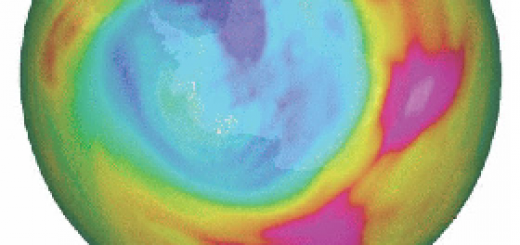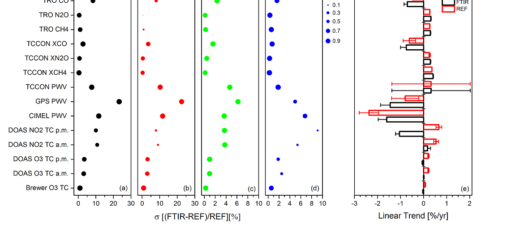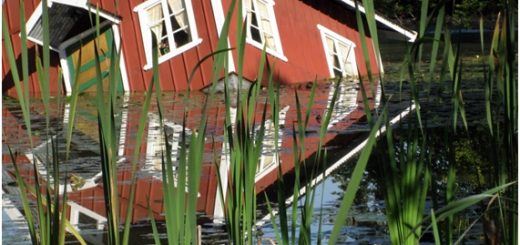Cooperation between Spain and Iran in the framework of SDS-WAS
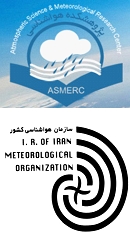

Dr. Saviz Sehat Kashani, Academic member of Atmospheric Science and Meteorological Research Center (ASMERC) of the Islamic Republic of Iran Meteorological Organization (IRIMO), participated in the training course on “Atmospheric Aerosols and Mineral Dust”. The training course was organized by the Izaña Atmospheric Research Centre (IARC), from the State Meteorological Agency of Spain (AEMET), and was held from 20th June to 6th July 2017.
This training course was an activity organized in the frame of the WMO Sand and Dust Storm Warning Advisory and Assessment System (SDS-WAS) Regional Centre for Northern Africa, Middle East and Europe hosted by AEMET and the Barcelona Supercomputing Centre.
Dr. Sehat received information on the SDS WAS program, and specifically on several aspects related to the mineral dust observations, and on complementarities and synergies with the WMO Global Atmospheric Watch (GAW) program from Dr. Emilio Cuevas. Dr. Africa Barreto introduced main concepts on lidar technique and showed the lidar program carried out at the IARC to characterize the vertical structure of the Saharan Air Layer (SAL). Dr. Carmen Guirado-Fuentes was in charge of detailing operational and research aspects of solar photometry technique and specifically the AERONET (Aerosol Robotic Network) program and the European ACTRIS (Aerosols, Clouds, and Trace gases Research InfraStructure) project, providing practical information on sun photometry calibration by using the handheld Calitoo (Tenum) sunphotometer, and on activities carried out at the optical laboratory.
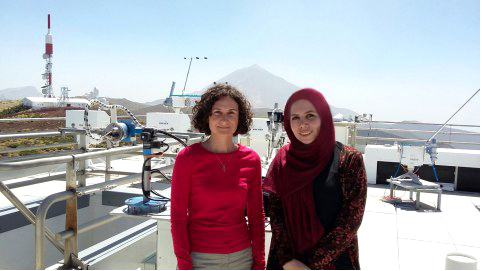
Dr. Saviz Sehat with Dr. Carmen Guirado-Fuentes at the terrace of the Izaña Observatory’s observation tower.
Dr. Sehat had also the opportunity to work with Tenum engineers who were meeting in Izaña in a calibration campaign within the framework of ACTRIS, to carry out with them some instrument calibrations and receive first-hand information about Calitoo’s new software and developments.
The new zenith-looking narrow-band radiometer-based system (ZEN) for dust aerosol optical depth monitoring and its measurement methodology was explained by Fernando Almansa, main developer of this new instrument (Almansa et al., 2017).
Detailed information of techniques, methodologies, and science on in-situ aerosols were provided by Dr. Sergio Rodríguez and his team (Dr. Elisa Sosa and Dr. Isabel García), including filters weighing, calibration activities within an special aerosols intensive summer campaign was held at Izaña Observatory, and maintenance and calibration works in the aerosol research laboratory “Prof. Joseph M. Prospero”. Special attention was given to the atmospheric mineral dust monitoring program using different instrumental techniques and methodologies.
Dr. Sehat had the opportunity to participate in the workshop entitled “ACE20: Future North Atlantic Atmospheric Observation Systems. Assessing the legacy of ACE2” was held in the Hotel Mencey at Santa Cruz de Tenerife (The Canary Islands, Spain) from 4 to 6 July 2017 (see https://goo.gl/EpVJrH. Dr. Sehat met eminent scientists of atmospheric aerosols and dust fields during the workshop.
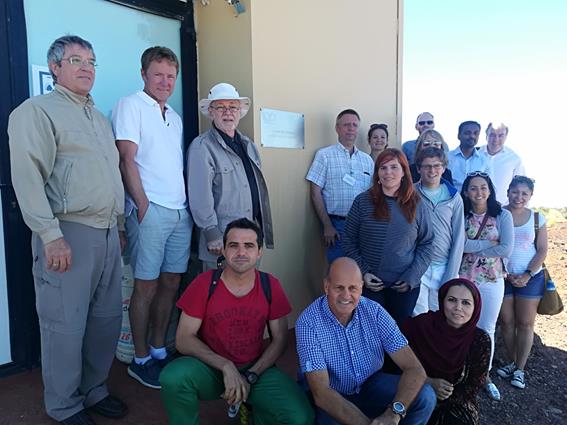
Dr. Saviz Sehat with the participants of the ACE20 workshop at the door of the Aerosol
Research Laboratory “Joseph M. Prospero”, and with Prof. Prospero (standing, 3rd from the left) (July 5, 2017).
A half-day special session was organized to discuss potential collaborations within the SDS-WAS between IRIMO and AEMET with several IARC researchers.
Dr. Sehat had the opportunity to take beautiful photographs of the sunrise and sunset from the summits of Tenerife during her overnight stay at the Observatory of Izaña.
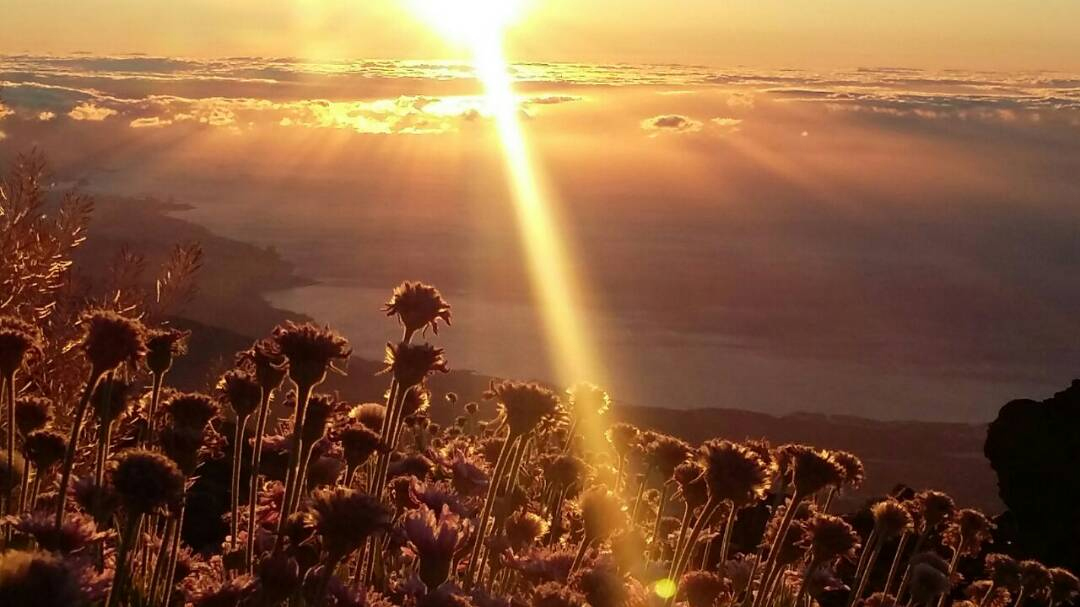

Pictures taken by Dr. Sehat during her overnight at the Izaña Observatory.
On the return trip to Tehran, Dr. Saviz Sehat made a one-day stop in Barcelona where she had the opportunity to meet researchers from the Barcelona Supercomputing Center, Dr. Sara Basart and Dr. Enza Di Tomaso, with whom she discussed several aspects of SDS-WAS, and assessed the opportunity for Iran to join the SDS-WAS activities in model validation and mineral dust characterization in a key region where there is very little information, vital to improving atmospheric mineral dust predictions.
We thank IRIMO for providing the necessary resources to enable Dr. Sehat to participate in the training course, and to Dr. Sehat for her very enthusiastic and fruitful SDS-WAS training course follow-up.

